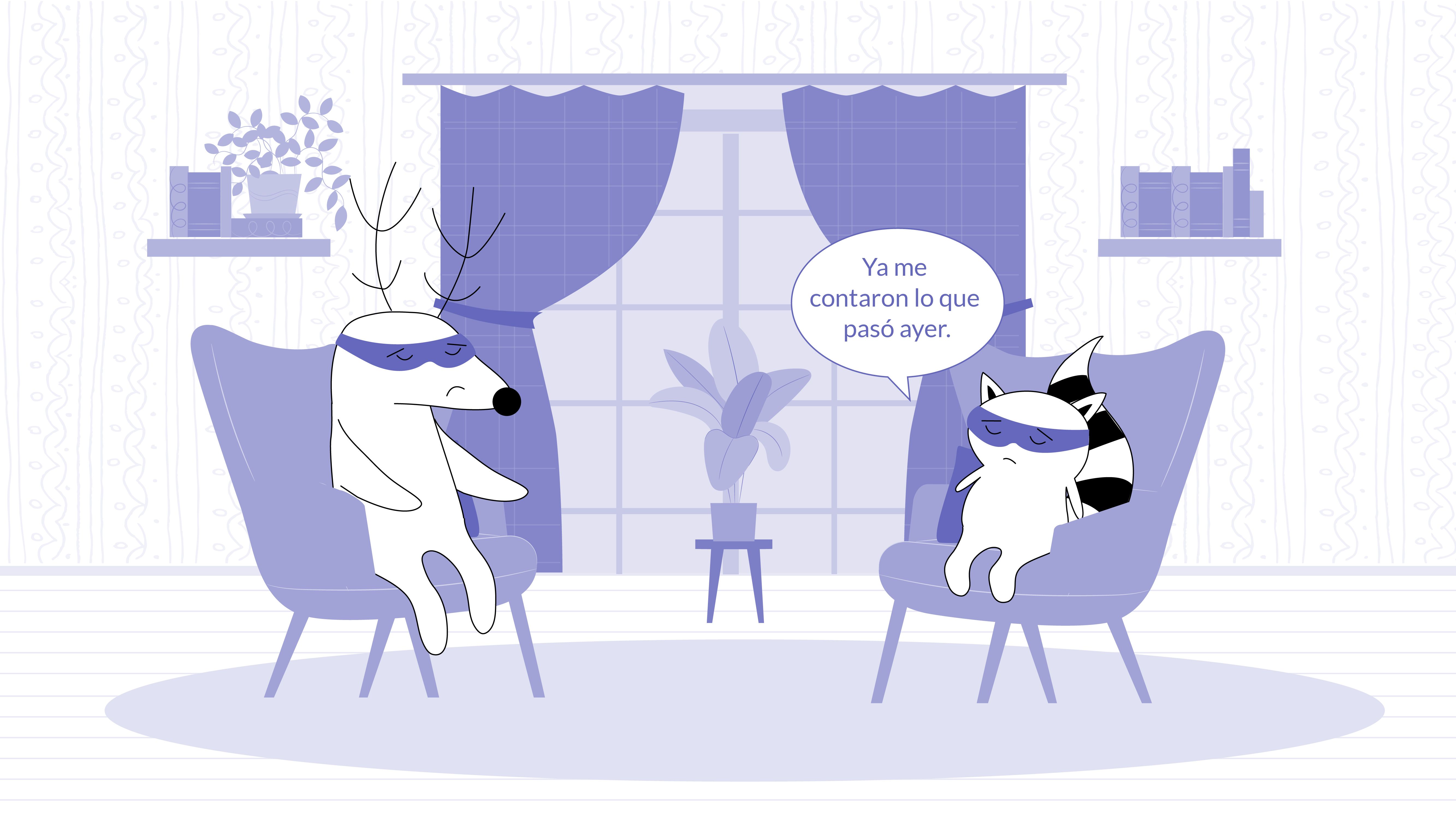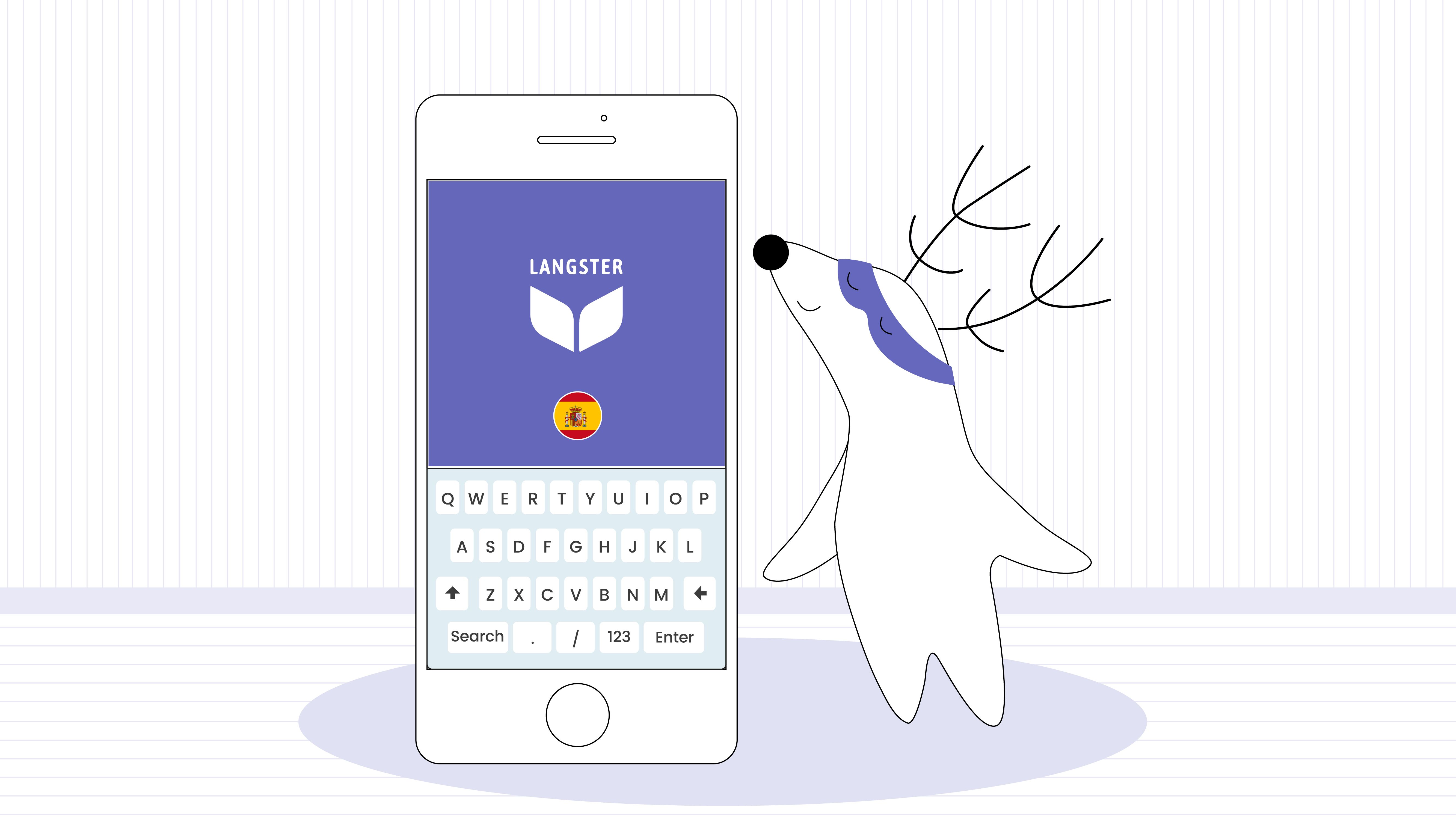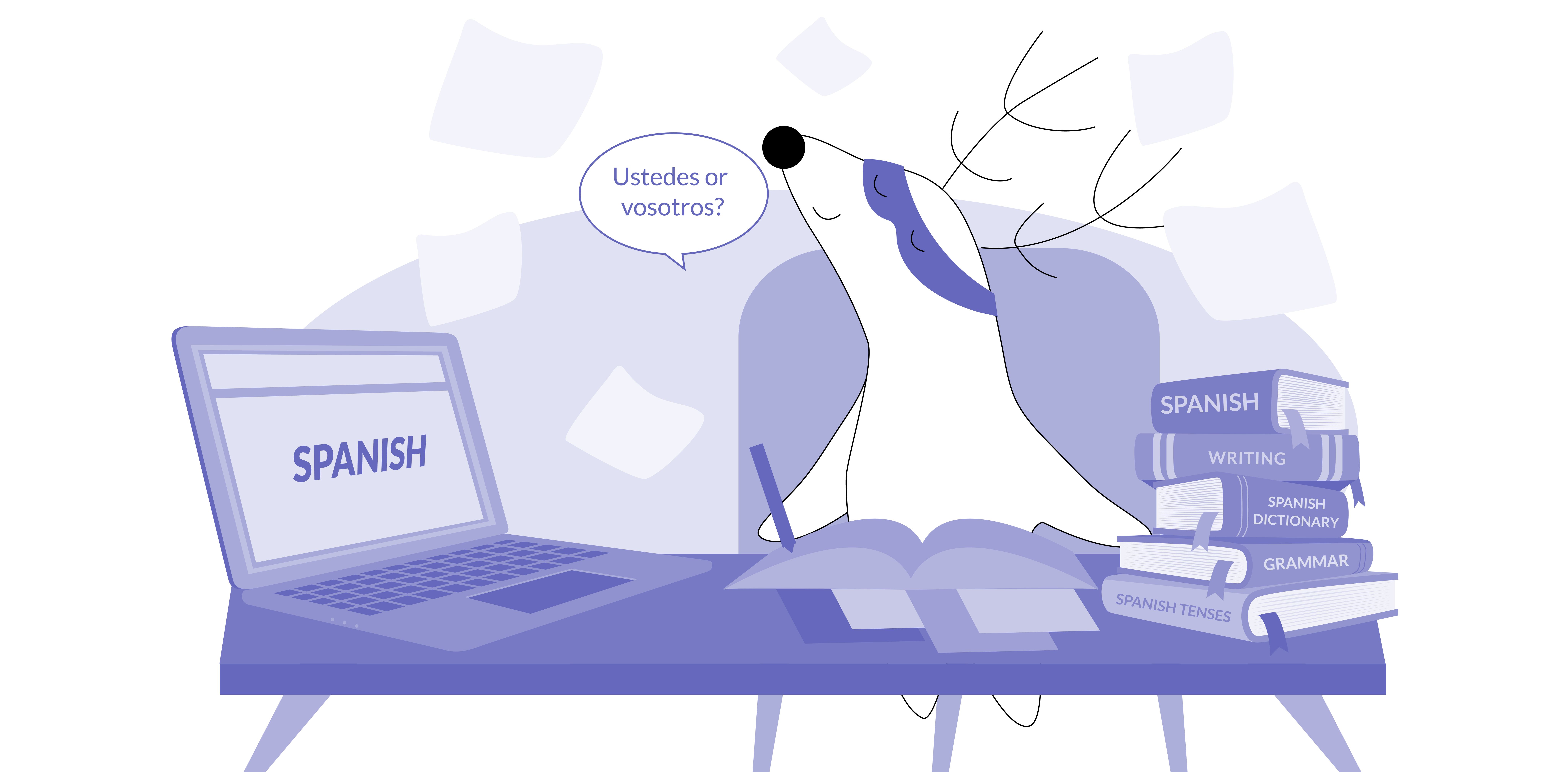
Learning a new language can be an exciting yet daunting endeavor, especially when it comes to understanding how verbs are conjugated. In the case of Spanish, mastering verb conjugation is fundamental to gaining fluency in the language. By understanding Spanish conjugation, you'll be able to express yourself accurately and communicate effectively with native and non-native speakers alike.
In this article, we will provide a comprehensive guide to mastering Spanish verb conjugation, covering the different verb tenses and the most common verbs as well as offering practical examples to reinforce your understanding. Let's go!
Learn Spanish with Langster
The Importance of Spanish Conjugation
Conjugation refers to changing a verb to match its subject, tense, and mood. To conjugate Spanish verbs, you need to show who is performing the action, when it happened, and its level of certainty. Without a solid grasp of how to conjugate verbs, you may struggle to construct grammatically correct sentences and comprehend Spanish texts.
In Spanish, there are three different present tenses: present indicative, present subjunctive, and present progressive. Here's an explanation of each with examples of how each conjugated verb looks:
Present Tense
The present tense expresses actions happening at the current moment or general truths. To conjugate regular verbs, remove the infinitive ending (-ar, -er, or -ir) and replace it with specific endings based on the subject. Let's take a look at the verb hablar (to speak):
| Spanish | English |
|---|---|
| Yo hablo | I speak |
| Tú hablas | You speak |
| Él/Ella/Usted habla | He/She/You speak (formal) |
| Nosotros/Nosotras hablamos | We speak |
| Vosotros/Vosotras habláis | You all speak |
| Ellos/Ellas/Ustedes hablan | They/You all speak |
| Spanish | English |
|---|---|
| Yo hablo | I speak |
| Tú hablas | You speak |
| Él/Ella/Usted habla | He/She/You speak (formal) |
| Nosotros/Nosotras hablamos | We speak |
| Vosotros/Vosotras habláis | You all speak |
| Ellos/Ellas/Ustedes hablan | They/You all speak |
Remember to pay attention to irregular verbs such as ser (to be) and ir (to go), which have unique conjugation patterns.
Present Indicative
This is the most common present tense used to talk about actions happening in the present or general truths.
Spanish
English
Hablo español.
I speak Spanish.
Caminas rápido.
You walk fast.
Ellos estudian mucho.
They study a lot.
Nosotros comemos pizza los viernes.
We eat pizza on Fridays.
Present Subjunctive
This tense expresses desires, doubts, opinions, or hypothetical situations.
Spanish
English
Espero que vengas pronto.
I hope you come soon.
Quiero que estudies más.
I want you to study more.
Es importante que hagan ejercicio.
It's important that they exercise.
Ojalá que llueva mañana.
I hope it rains tomorrow.
Present Progressive
This tense is used to describe ongoing actions that are happening right now.
Spanish
English
Estoy estudiando para el examen.
I am studying for the exam.
Él está trabajando en la oficina.
He is working in the office.
Los niños están jugando en el parque.
The children are playing in the park.
Estamos comiendo cena en este momento.
We are having dinner right now.
It's important to note that verb conjugations vary based on the subject pronouns (yo, tú, él/ella/usted, nosotros/nosotras, vosotros/vosotras, ellos/ellas/ustedes) and the type of verb (-ar, -er, -ir).
Additionally, there are irregular verbs and reflexive verbs that have unique conjugations in the present tense.

Past Tense
The past tense is used to describe actions that have already happened. Spanish has two common past tenses: the preterite and the imperfect.
Preterite
The preterite tense is used for completed actions in the past. Irregular verbs must be memorized individually, as they do not follow regular conjugation patterns.
| Spanish | English |
|---|---|
| Comer | to eat |
| Yo comí | I ate |
| Tú comiste | You ate |
| Él/Ella/Usted comió | He/She/You ate |
| Nosotros/Nosotras comimos | We ate |
| Vosotros/Vosotras comisteis | You all ate |
| Ellos/Ellas/Ustedes comieron | They/You all ate |
| Spanish | English |
|---|---|
| Comer | to eat |
| Yo comí | I ate |
| Tú comiste | You ate |
| Él/Ella/Usted comió | He/She/You ate |
| Nosotros/Nosotras comimos | We ate |
| Vosotros/Vosotras comisteis | You all ate |
| Ellos/Ellas/Ustedes comieron | They/You all ate |
The preterite is used to talk about completed actions in the past, often within a specific time frame. Here are a few examples:
Spanish
English
Ayer compré un libro.
Yesterday, I bought a book.
Visitamos Madrid el verano pasado.
We visited Madrid last summer.
Él estudió toda la noche para el examen.
He studied all night for the exam.
Imperfect Tense
The imperfect tense, on the other hand, describes ongoing or repeated actions in the past. Regular verbs follow a predictable pattern of conjugation.
| Spanish | English |
|---|---|
| Vivir | To live |
| Yo vivía | I lived |
| Tú vivías | You lived |
| Él/Ella/Usted vivía | He/She/You formal lived |
| Nosotros/Nosotras vivíamos | We lived |
| Vosotros/Vosotras vivíais | You all lived |
| Ellos/Ellas/Ustedes vivían | They/You all lived |
| Spanish | English |
|---|---|
| Vivir | To live |
| Yo vivía | I lived |
| Tú vivías | You lived |
| Él/Ella/Usted vivía | He/She/You formal lived |
| Nosotros/Nosotras vivíamos | We lived |
| Vosotros/Vosotras vivíais | You all lived |
| Ellos/Ellas/Ustedes vivían | They/You all lived |
The imperfect is used to describe ongoing or habitual actions in the past, with no specific beginning or end. Like here:
Spanish
English
Cuando era niño, jugaba mucho al fútbol.
When I was a child, I used to play soccer a lot.
Todos los días, iba al parque a pasear.
Every day, I would go to the park to walk.
Hacía sol y las aves cantaban.
It was sunny, and the birds were singing.
The Past Perfect
The past perfect is used to express an action that occurred before another action in the past.
Spanish
English
Cuando llegué a casa, mi madre ya había cocinado la cena.
When I arrived home, my mother had already cooked dinner.
Había estudiado mucho antes del examen.
I had studied a lot before the exam.
Él me contó lo que había sucedido.
He told me what had happened.

The Past Progressive
The past progressive is used to describe ongoing actions that were happening in the past.
Spanish
English
Estaba leyendo un libro cuando sonó el teléfono.
I was reading a book when the phone rang.
Ellos estaban bailando cuando llegué.
They were dancing when I arrived.
Mientras llovía, nos refugiábamos en la casa.
While it was raining, we sought shelter in the house.
The Conditional Perfect
The conditional perfect in Spanish is used to express actions that would have occurred in the past under certain conditions.
Spanish
English
Si hubiera tenido dinero, habría comprado el regalo.
If I had had money, I would have bought the gift.
Ella habría venido si le hubieran invitado.
She would have come if they had invited her.
Si hubiéramos estudiado más, habríamos aprobado el examen.
If we had studied more, we would have passed the exam.
Future Tense
The future tense allows us to discuss actions that will happen in the future. To conjugate regular verbs, add specific endings to the infinitive form.
| Spanish | English |
|---|---|
| Bailar | to dance |
| Yo bailaré | I will dance |
| Tú bailarás | You will dance |
| Él/Ella/Usted bailará | He/She/You formal will dance |
| Nosotros/Nosotras bailaremos | We will dance |
| Vosotros/Vosotras bailaréis | You all will dance |
| Ellos/Ellas/Ustedes bailarán | They/You all will dance |
| Spanish | English |
|---|---|
| Bailar | to dance |
| Yo bailaré | I will dance |
| Tú bailarás | You will dance |
| Él/Ella/Usted bailará | He/She/You formal will dance |
| Nosotros/Nosotras bailaremos | We will dance |
| Vosotros/Vosotras bailaréis | You all will dance |
| Ellos/Ellas/Ustedes bailarán | They/You all will dance |
In Spanish, there are two main future tenses used to talk about actions that will happen in the future. Below, we’ll present the different future tenses with examples.
Simple Future
The simple future is used to express actions that will happen in the future.
Spanish
English
Mañana viajaré a París.
Tomorrow, I will travel to Paris.
Ellos comprarán una casa nueva.
They will buy a new house.
Estudiaré mucho para el examen.
I will study a lot for the exam.
Future Perfect
The future perfect is used to express actions that will have been completed in the future before another action or point in time.
Spanish
English
Para el año que viene, habré terminado mis estudios.
By next year, I will have finished my studies.
Antes de las vacaciones, ella ya habrá conseguido un nuevo trabajo.
Before the holidays, she will have already found a new job.
A esa hora, ellos ya habrán llegado al aeropuerto.
By that time, they will have already arrived at the airport.
It's important to note that both future tenses are formed by using the appropriate conjugated form of the verb haber followed by the past participle of the main verb.
Tips and Tricks for Irregular Verbs
Irregular verbs are an integral part of Spanish conjugation, and there are various strategies to help learners navigate them successfully. First, identify common irregularities, and learn their unique conjugation patterns. Practice these verbs frequently to reinforce your knowledge.
Additionally, paying attention to similarities among irregular verbs can be beneficial. Many irregular verbs share conjugation patterns, such as the stem-changing -ir verbs (e.g., preferir, dormir). By recognizing these patterns, you can simplify the process of conjugation.

Start With the Most Common Irregular Verbs
Begin by memorizing the most frequently used irregular verbs. This will provide a solid foundation for your language learning journey.
Learn in Context
Instead of trying to memorize irregular verbs in isolation, learn them in sentences or phrases. This way, you can see how they are used in real-life situations, which aids retention and understanding.
Group Similar Verbs Together
Grouping irregular verbs with similar patterns or sound changes can make memorization easier. For example, verb conjugations like hacer, hizo, hecho and decir, dijo, dicho follow similar patterns.
Use Mnemonic Devices
Create mnemonics or memory aids to help remember irregular verb forms. For instance, you could create a catchy phrase or image that connects the past tense form with the base form of the verb.
Practice with Flashcards
Utilize flashcards to reinforce your knowledge of irregular verbs. Write the base form on one side and the past tense and past participle forms on the other. Review the flashcards regularly to enhance your recall.
Take Advantage of Online Resources
Numerous websites and apps provide interactive exercises, quizzes, and games to practice irregular verbs, such as Spanish Unicorn or Profe DELE. Make use of these resources to make learning more engaging and fun.
Immerse Yourself in Spanish
Surround yourself with Spanish-language content, such as books, movies, TV shows, and music. Paying attention to how irregular verbs are used naturally in these materials can help reinforce your understanding.
The Bottom Line

In summary, understanding Spanish verb conjugation is essential for achieving fluency in the language. With a solid grasp of present, past, and future tenses, learners can confidently express themselves in various situations.
Remember to practice regularly with Langster, pay attention to irregular verbs, and seek opportunities to apply your newfound knowledge in real-life settings. ¡Buena suerte!
Learn Spanish with Langster









